Losing a limb is life-changing, but the right prosthetic can restore mobility, confidence, and independence. If you are considering a prosthetic limb, one of the most important decisions is choosing between a bionic prosthetic and a traditional prosthetic. Both options have their advantages, but the best choice depends on your lifestyle, needs, and personal preferences.
Bionic prosthetics use advanced technology to mimic natural movement, often incorporating sensors, motors, and even neural control to make movements more intuitive. Traditional prosthetics, on the other hand, rely on mechanical designs that provide essential function without the need for electronic components. While bionic limbs offer cutting-edge features, traditional prosthetics are often simpler, more affordable, and require less maintenance.

Understanding Traditional Prosthetic Limbs
Traditional prosthetic limbs have been used for centuries, evolving from simple wooden structures to more advanced mechanical designs.
These prosthetics do not rely on electronic components but instead use body movement, harness systems, or external supports to function. They are designed to restore basic mobility and function, allowing users to perform everyday tasks with a reliable and durable artificial limb.
How Traditional Prosthetics Work
Most traditional prosthetic limbs operate using either a passive or body-powered mechanism. Passive prosthetics do not have moving parts and are primarily used for cosmetic purposes.
They provide a natural appearance but do not assist with movement. Body-powered prosthetics, on the other hand, use cables and harnesses that connect to the user’s residual limb or another part of the body.
By moving the shoulder, elbow, or upper body, the user can control the prosthetic limb’s movement.
For lower limb prosthetics, traditional designs include mechanical knees and foot components that provide support for standing and walking.
These prosthetics rely on the user’s ability to shift their weight and maintain balance. Some advanced traditional prosthetic legs include hydraulic or microprocessor-controlled knees that improve stability and reduce strain.
Advantages of Traditional Prosthetics
One of the main benefits of traditional prosthetic limbs is their simplicity. Since they do not require electricity or software, they are generally more durable and require less maintenance.
Users do not have to worry about charging batteries or dealing with technical malfunctions, making them a dependable option for daily use.
Another advantage is cost. Traditional prosthetics are often more affordable than bionic limbs, making them a more accessible option for many users. They also tend to have a longer lifespan, as they are built with durable materials that withstand physical wear and tear.
Comfort is another factor to consider. Traditional prosthetics are often lighter than bionic ones because they do not have motors or electronic components. This can make them easier to wear for extended periods, reducing fatigue and strain on the body.
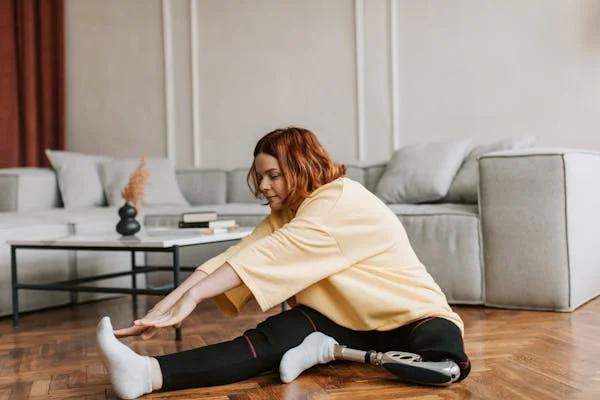
Understanding Bionic Prosthetic Limbs
Bionic prosthetic limbs represent the latest advancements in prosthetic technology, offering users a more natural and intuitive experience.
Unlike traditional prosthetics, bionic limbs use electronic components, sensors, and sometimes even artificial intelligence to mimic real limb movement.
These prosthetics allow for more precise control and can adapt to different activities, making them an excellent choice for individuals looking for enhanced functionality.
How Bionic Prosthetics Work
Bionic limbs rely on small electric motors to move joints and fingers, providing a wider range of motion than mechanical prosthetics. Most modern bionic arms and hands use myoelectric control, meaning they detect electrical signals from the user’s muscles.
These signals are then translated into movement, allowing users to open and close their prosthetic hand or adjust grip strength without using external cables or harnesses.
For lower limb prosthetics, bionic legs and feet use microprocessors and sensors to adjust movement in real time. These smart components detect walking speed, weight distribution, and even changes in terrain, allowing for smoother and more stable motion.
Some advanced models include adaptive knee joints that respond instantly to the user’s movements, providing better balance and reducing the risk of falls.
Advantages of Bionic Prosthetics
One of the biggest advantages of bionic limbs is the level of control they offer. Since they can be operated using natural muscle signals, movements feel more intuitive.
This allows users to perform complex tasks, such as holding delicate objects, typing, or even playing musical instruments. The ability to adjust grip strength and finger position makes bionic hands much more functional than traditional prosthetic hands.
Bionic prosthetics also provide better mobility and comfort, especially for lower limb users. The use of microprocessors and dynamic sensors allows for automatic adjustments, reducing strain on the residual limb.
This means users experience less fatigue when walking or performing physical activities. Some bionic legs also come with shock absorption and energy-return systems, helping users move more naturally and efficiently.
Another significant benefit is technological integration. Some bionic limbs can connect to smartphone apps, allowing users to customize settings, monitor battery levels, and even track progress in rehabilitation.
Future developments in prosthetic technology may also include brain-machine interfaces, which would allow users to control their prosthetics directly with their thoughts.
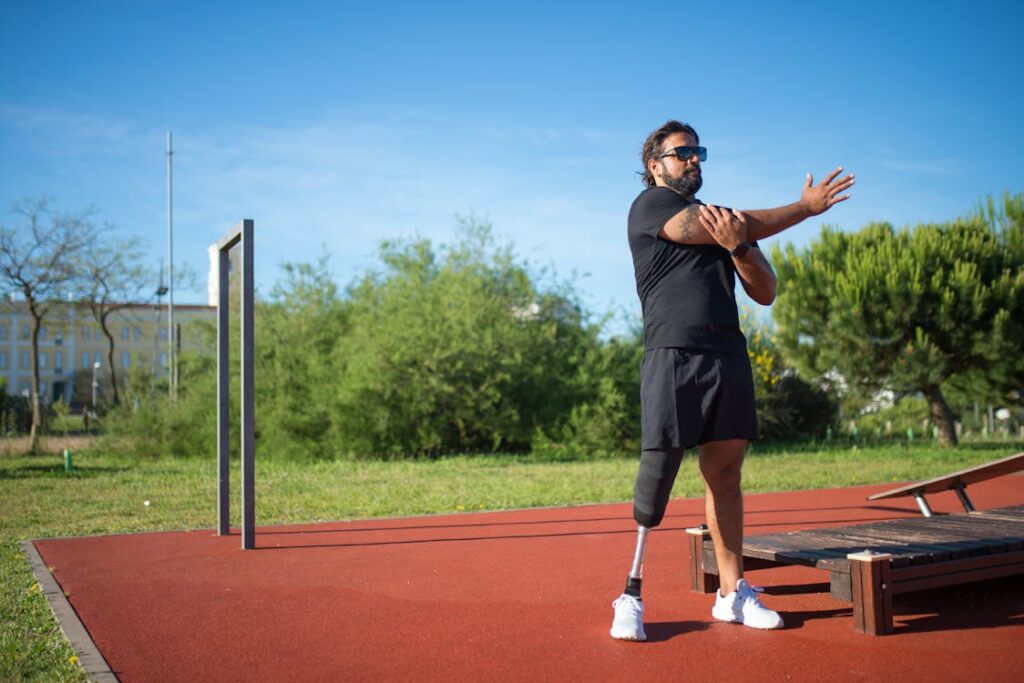
Factors to Consider When Choosing Between a Bionic and a Traditional Prosthetic Limb
Selecting the right prosthetic limb is a highly personal decision. What works for one person may not work for another, as each user has different needs, lifestyles, and expectations.
While both bionic and traditional prosthetic limbs serve the same purpose—restoring mobility and function—they differ in cost, durability, maintenance, and ease of use. Understanding these factors will help you make an informed choice that best suits your everyday life.
Functionality and Daily Use
The type of activities you perform daily should be a major factor in your decision. If you require fine motor skills, such as typing, handling small objects, or using tools, a bionic prosthetic limb may be the better choice.
The ability to adjust grip strength and move fingers independently provides a level of dexterity that traditional prosthetics cannot offer. Bionic legs also help with smoother walking, as they can adjust to different surfaces and speeds.
If your daily activities involve tasks that do not require advanced movement control, a traditional prosthetic may be sufficient.
People who need basic support for walking, lifting, or holding objects without requiring precision may find traditional prosthetics more practical. Body-powered arms, for example, can still perform a strong grip function, making them useful for simple tasks.
Cost and Affordability
Bionic prosthetic limbs are significantly more expensive than traditional prosthetics due to the advanced technology they use. The cost includes not only the limb itself but also ongoing expenses for battery replacements, software updates, and maintenance.
While some insurance providers may cover part of the cost, not everyone has access to funding options that make bionic limbs affordable.
Traditional prosthetic limbs are generally more budget-friendly, making them a good option for individuals looking for a cost-effective solution.
They also have lower maintenance costs since they do not rely on electronic components that need regular servicing. If affordability is a major concern, a well-fitted traditional prosthetic limb may be the most practical choice.
Durability and Maintenance
Durability is another key consideration. Since traditional prosthetics do not have electrical components, they are less likely to experience malfunctions or require repairs.
They are built with durable materials like carbon fiber, metal, and high-strength plastics, making them long-lasting with minimal upkeep.
Bionic prosthetics, on the other hand, require regular maintenance to keep their electronic components functioning properly. Sensors, motors, and batteries need to be checked periodically, and software updates may be necessary to ensure smooth operation.
While these prosthetics offer more advanced features, they require greater care and attention to maintain their performance over time.
Comfort and Fit
A prosthetic limb must be comfortable to wear, especially if you use it for long hours. Traditional prosthetics are often lighter than bionic ones, making them easier to wear for extended periods. Since they do not have motors or batteries, they place less strain on the residual limb.
Bionic prosthetics, while slightly heavier, offer a more natural feel in movement. Features like shock absorption in bionic legs and adjustable grip strength in bionic hands can make everyday activities smoother and more comfortable.
However, users must also consider the weight of the device and how it affects their overall mobility.
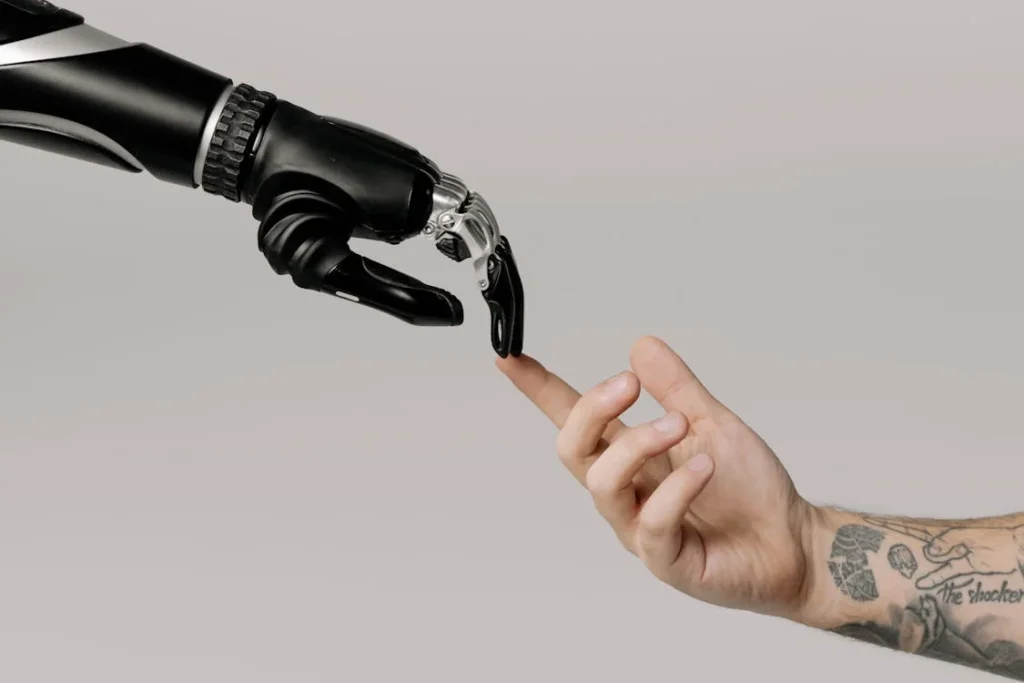
Lifestyle and Activity Level Considerations
Your daily routine and activity level play a crucial role in determining whether a bionic or traditional prosthetic limb is the better fit. Both types of prosthetics offer different advantages depending on how much movement, precision, and adaptability you require throughout the day.
Work and Professional Needs
If your job involves fine motor tasks, frequent hand use, or requires precise movements, a bionic prosthetic limb may be the best option.
Professionals working in fields such as healthcare, engineering, or creative industries often benefit from the advanced dexterity that bionic hands provide.
The ability to adjust grip strength and switch between different hand positions allows for more efficient performance in tasks such as typing, holding tools, or handling delicate objects.
For those in physically demanding jobs that require lifting, carrying, or repetitive movements, a traditional prosthetic limb may be a more durable and practical option.
Since these limbs do not have electronic components, they are more resistant to damage from heavy use and exposure to dust, water, or extreme temperatures.
Body-powered prosthetic arms, for example, provide a strong grip without the risk of battery depletion or electronic failure.
Sports and Physical Activities
Individuals who enjoy an active lifestyle need a prosthetic that can withstand high-impact activities.
Bionic legs with microprocessor-controlled knees and ankles can adjust to different terrains and walking speeds, making them a great option for those who walk long distances or participate in recreational activities like hiking.
Some bionic prosthetics are even designed specifically for running, with energy-returning feet that provide greater propulsion and stability.
Traditional prosthetics are often preferred for activities that require durability, such as weightlifting or manual labor. Since they do not rely on electronic parts, they can handle greater stress without the risk of malfunctions.
Many athletes, especially in contact sports, opt for traditional prosthetic limbs that offer high strength and resilience without the need for frequent maintenance.
Water Resistance and Environmental Conditions
Bionic prosthetic limbs, while technologically advanced, are often more sensitive to moisture and environmental conditions. Most bionic limbs are not fully waterproof, meaning they must be kept dry to avoid damaging the internal electronics.
This can limit activities such as swimming, showering, or working in wet environments.
Traditional prosthetics, on the other hand, can be built with waterproof materials, allowing users to participate in activities involving water.
If swimming, fishing, or water-based sports are a regular part of your routine, a traditional prosthetic limb designed for these conditions may be the more practical choice.
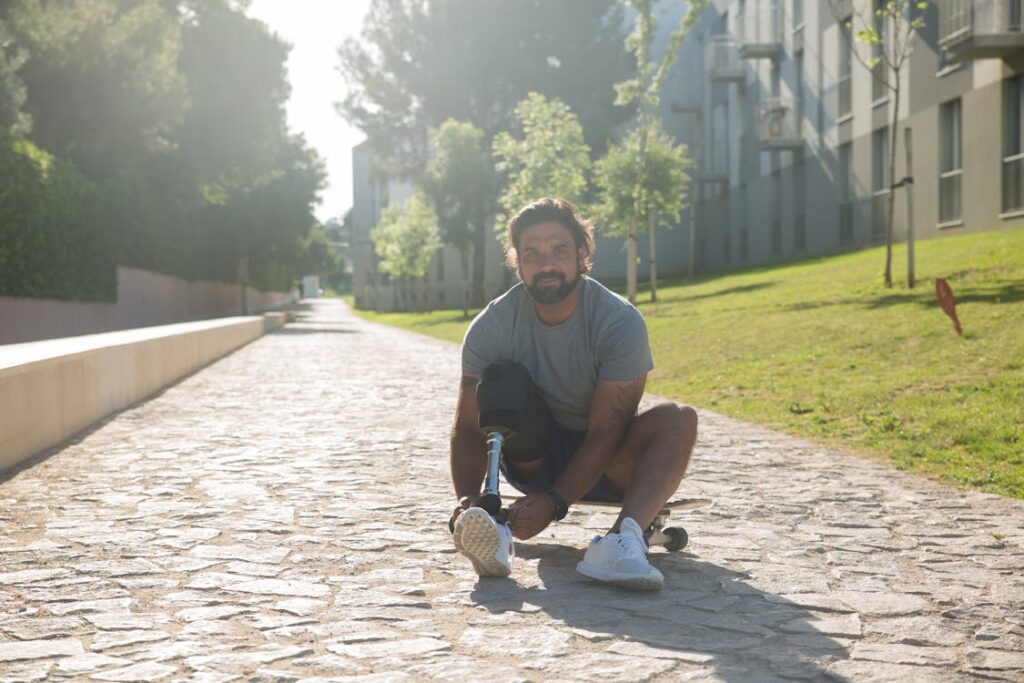
Long-Term Adaptability and Future Upgrades
Choosing between a bionic and a traditional prosthetic limb is not just about immediate needs; it is also about considering long-term adaptability.
Over time, your lifestyle, health, and technology preferences may change, making it important to choose a prosthetic that can evolve with you.
Adjusting to a Prosthetic Over Time
For new prosthetic users, the learning curve can vary depending on the type of limb they choose.
Traditional prosthetics, especially body-powered ones, require users to develop strength and coordination to operate cables or harnesses. While this may take time, many users find them dependable and easy to master with practice.
Bionic prosthetics require training as well, but they offer a more natural control method using muscle signals. Many users find that, after a period of adjustment, myoelectric prosthetics feel more intuitive and less physically demanding.
However, because they rely on electronic sensors, users must also learn how to manage battery life and maintain the prosthetic’s software settings.
Future-Proofing Your Prosthetic Choice
Prosthetic technology is advancing rapidly, and some users may want a prosthetic that allows for future upgrades. Bionic limbs are more adaptable in this sense, as they can receive firmware updates and software improvements that enhance performance over time.
Some models even allow users to customize grip settings or walking patterns through smartphone apps, making them more flexible as needs change.
Traditional prosthetics, while durable, do not offer the same level of adaptability. Once fitted, they typically remain unchanged unless manually adjusted by a prosthetist.
However, this also means they have fewer components that can malfunction or become outdated, making them a reliable long-term option for those who do not require advanced technology.
Considering the Impact of Prosthetic Fit on Residual Limb Changes
Over time, a person’s residual limb may change in size or shape due to muscle atrophy, weight fluctuations, or natural healing processes. This can affect how a prosthetic fits and performs.
Traditional prosthetic limbs often require socket adjustments or new fittings to accommodate these changes.
Bionic limbs, depending on their design, may offer self-adjusting sockets or customized fit technology, which can provide better long-term comfort.
However, because they rely on precise electrode placement to detect muscle signals, any changes in the residual limb can affect functionality, sometimes requiring recalibration by a specialist.
Understanding how your body may change over time can help you choose a prosthetic that will remain comfortable and functional for years to come.
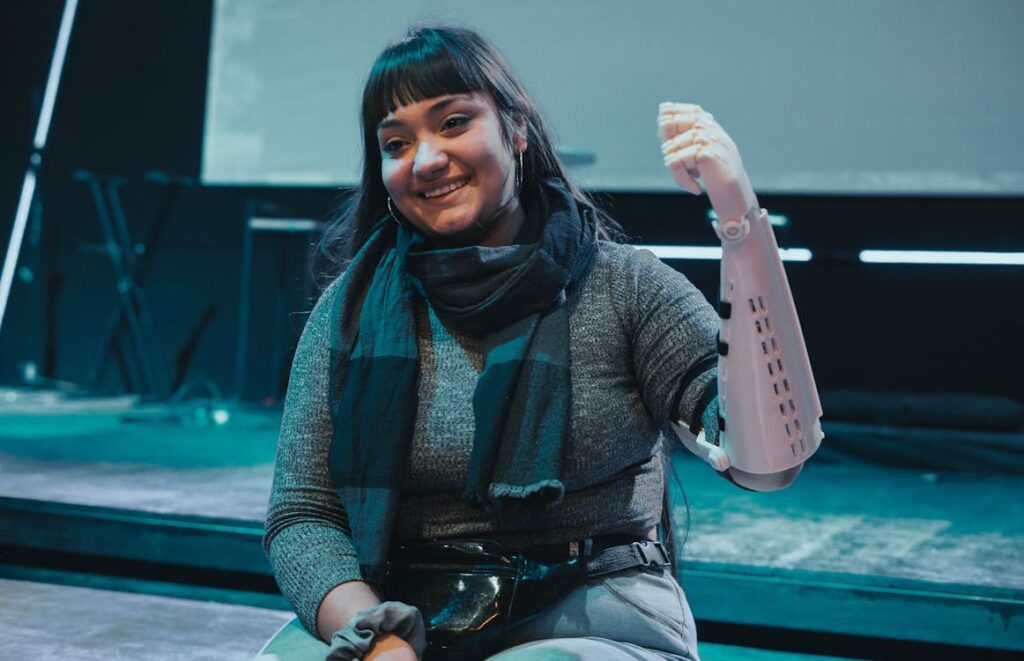
Psychological and Emotional Considerations
Choosing a prosthetic limb is not just a physical decision; it is also an emotional one. A prosthetic is more than just a medical device—it becomes a part of your body and daily life.
The way a prosthetic looks, feels, and functions can impact confidence, self-image, and overall well-being. Understanding how a bionic or traditional prosthetic limb may affect your mental and emotional health is an important part of making the right choice.
Confidence and Social Comfort
For many people, the appearance of their prosthetic limb matters just as much as its function. Traditional prosthetics are often designed for durability and practicality, but they may lack a natural appearance.
Some users prefer cosmetic prosthetics, which closely resemble a real limb, even if they do not offer advanced functionality. This can provide a sense of normalcy and help users feel more comfortable in social settings.
Bionic prosthetics, on the other hand, are designed to be high-tech and futuristic in appearance. While some users find this empowering and enjoy showcasing their advanced limb, others may feel self-conscious about drawing attention.
Many bionic prosthetic hands and arms have exposed mechanical components, making them visibly different from a natural limb. Some manufacturers offer cosmetic covers that mimic real skin, providing a more natural look while maintaining advanced functionality.
Learning and Adapting to a Prosthetic
The mental adjustment to wearing a prosthetic limb varies from person to person. Traditional prosthetic limbs, especially body-powered ones, require physical effort and training to operate.
Some users enjoy the challenge and find that mastering a mechanical prosthetic gives them a greater sense of control over their movement. Others may find the physical strain frustrating and prefer the ease of bionic control.
Bionic prosthetics can feel more intuitive because they respond to muscle signals rather than requiring external force.
However, the reliance on technology means users must learn how to manage electronic controls, understand calibration settings, and get used to occasional technical troubleshooting. While some adapt quickly, others may feel overwhelmed by the learning process.
Overcoming Emotional Barriers
Adjusting to life with a prosthetic limb can come with emotional challenges. Feelings of loss, frustration, or anxiety are common, especially in the early stages of wearing a prosthetic.
The choice between a bionic or traditional prosthetic limb should take into account how much control, flexibility, and confidence the device will provide in everyday situations.
Support from family, medical professionals, and other prosthetic users can make a big difference in overcoming these emotional barriers.
Many users find that community support groups and rehabilitation programs help them build confidence and adapt to their prosthetic with a more positive mindset.
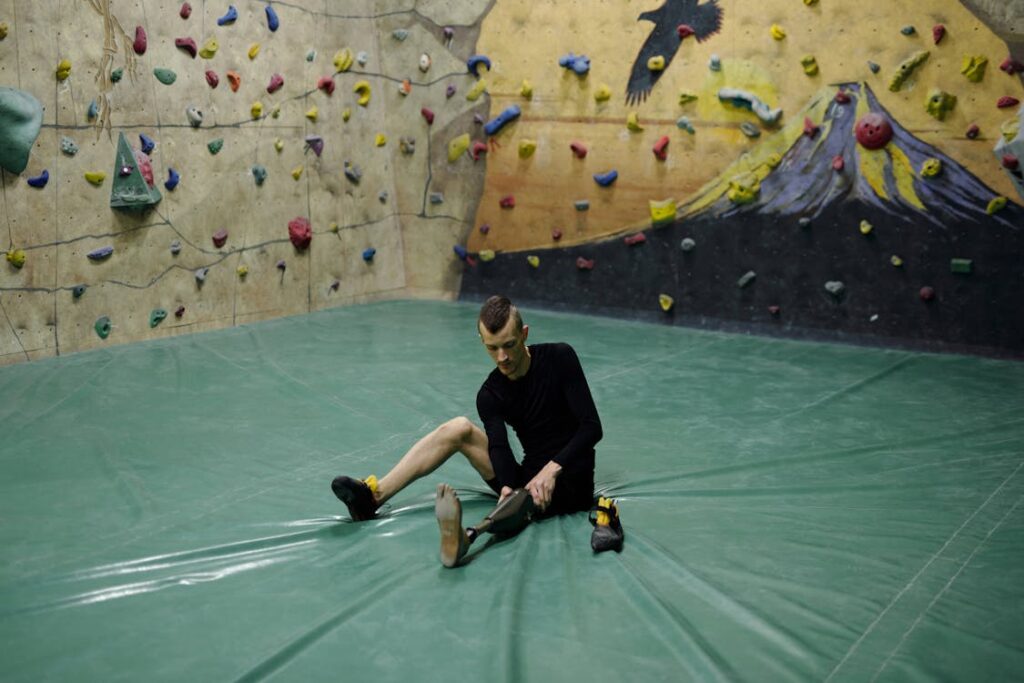
The Role of Rehabilitation and Training in Prosthetic Adaptation
Choosing between a bionic and a traditional prosthetic limb is only the first step. Regardless of which type of prosthetic you choose, proper rehabilitation and training are essential for achieving the best possible function and comfort.
A well-designed prosthetic is only effective if the user can fully integrate it into their daily life, and that requires patience, practice, and professional guidance.
The Importance of Early Rehabilitation
For new prosthetic users, rehabilitation starts long before the prosthetic is fitted. After an amputation, the residual limb undergoes changes in muscle structure, sensitivity, and shape.
Without proper preparation, using a prosthetic—whether traditional or bionic—can feel unnatural and uncomfortable.
Physical therapy focuses on strengthening the residual limb, improving balance, and preventing complications such as muscle atrophy.
Occupational therapy helps users develop everyday skills, from walking with a prosthetic leg to performing fine motor tasks with a prosthetic hand. The earlier these therapies begin, the smoother the transition to using a prosthetic will be.
Training for Traditional Prosthetic Use
Traditional prosthetic limbs, especially body-powered ones, require manual control and coordination. Users must learn how to engage cables, shift their body weight, and apply the right amount of force to operate their prosthetic effectively.
Training exercises focus on building the necessary strength and endurance to make movements feel more natural.
For lower limb prosthetic users, gait training is essential. Walking with a traditional prosthetic leg involves learning proper weight distribution, posture adjustments, and step timing.
Since traditional prosthetics do not automatically adjust to different walking speeds or terrains, users must practice adapting their movements to maintain balance and reduce strain on their residual limb.
Learning to Use a Bionic Prosthetic
Bionic prosthetic limbs rely on electronic signals and smart control systems, which require a different approach to training. Myoelectric prosthetics, for example, detect muscle contractions in the residual limb and translate them into movement.
Users must learn how to engage the correct muscles to control their prosthetic effectively.
One challenge of bionic prosthetic training is signal consistency. If a user’s muscle contractions are too weak or inconsistent, the prosthetic may not respond as expected. Rehabilitation exercises focus on improving muscle strength and signal accuracy to ensure smooth control.
Bionic leg users must also adjust to microprocessor-controlled movement. Unlike traditional prosthetics, bionic legs can automatically adjust knee resistance, foot position, and walking patterns.
While this provides greater mobility, users must still learn how to coordinate their body movements with the prosthetic’s smart features.
The Role of Gamified Rehabilitation
Modern rehabilitation techniques are making prosthetic training more engaging through gamification. Virtual reality, motion-tracking games, and interactive muscle training programs help users develop control over their prosthetic limbs in a fun and motivating way.
For bionic prosthetic users, digital feedback systems allow them to see their muscle activity in real time, helping them refine their control.
Traditional prosthetic users benefit from simulated tasks that improve coordination and endurance, making everyday movements easier to master.
Long-Term Prosthetic Adaptation
Regardless of the type of prosthetic, adaptation is an ongoing process. Over time, users may need to adjust their gait, grip strength, or posture to accommodate changes in their residual limb or activity level.
Regular follow-ups with prosthetists and therapists ensure that the prosthetic continues to function optimally.
With proper rehabilitation and training, both traditional and bionic prosthetic users can regain independence and perform daily activities with confidence. The key is consistent practice, expert guidance, and a willingness to adapt to new challenges as they arise.
Conclusion
Choosing between a bionic and a traditional prosthetic limb depends on many factors, including functionality, lifestyle, cost, and long-term adaptability. Traditional prosthetics offer durability, simplicity, and affordability, making them a practical choice for those who need a reliable and low-maintenance solution. Bionic prosthetics, on the other hand, provide advanced control, greater mobility, and a more natural feel, making them ideal for users who want the latest technology and improved dexterity.
Beyond the type of prosthetic, factors like rehabilitation, training, and psychological adjustment play a crucial role in the user’s overall experience. Both options require time and practice to master, but with the right support, users can regain independence and confidence in their daily lives.
At Robobionics, we are dedicated to helping individuals find the best prosthetic solution for their needs. Whether you are considering a traditional or bionic limb, we provide expert guidance, cutting-edge technology, and personalized support. Book a free demo of Grippy™ today and explore how advanced prosthetic technology can enhance your mobility and quality of life!




Pingback: Bionic Prosthetics: Revolutionizing Lives with Technology – Prosthetics Blog